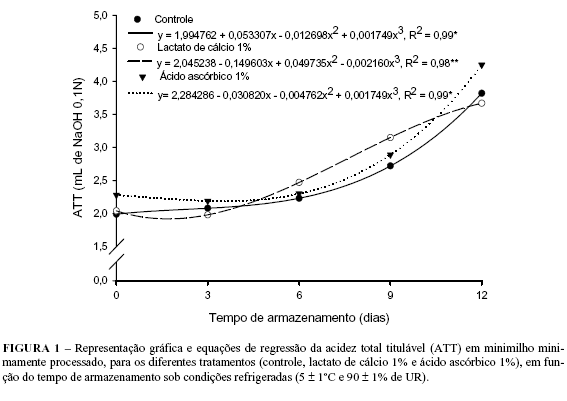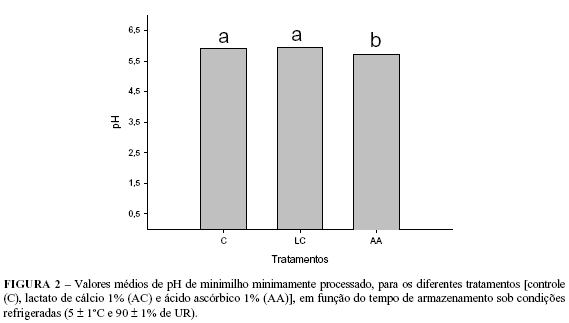The babycorn is a special form of not industrialized consumption of the corn, that consists of young spikes that are used two or three days after the exhibition of the hair of the spike, called style-stigmas. This work had as objective to evaluate the effects of calcium lactate and ascorbic acid on fresh-cut babycorn and to verify the possible alterations of the product during storage. Physical, physico-chemical, chemical and biochemical, characteristics were studied. The experiment was carried out in the Food Science Department at Federal University of Lavras, MG and conduct in completely randomized design, with three replicates. Treatments were arranged in a factorial 3x5, scheme constituted by the immersion of babycorn in distilled water, calcium lactate (1%) , ascorbic acid (1%) and stored for 0, 3, 6, 9 and 12 days (5ºC and 90% RH). Treatment with ascorbic acid increased the amount vitamin C in the minimally processed babycorn, suggesting it was absorbed by the tissue. The young ear treated with calcium lactate and ascorbic acid, had a shelf life of 12 days.
Zea mays; vitamin C; packing






